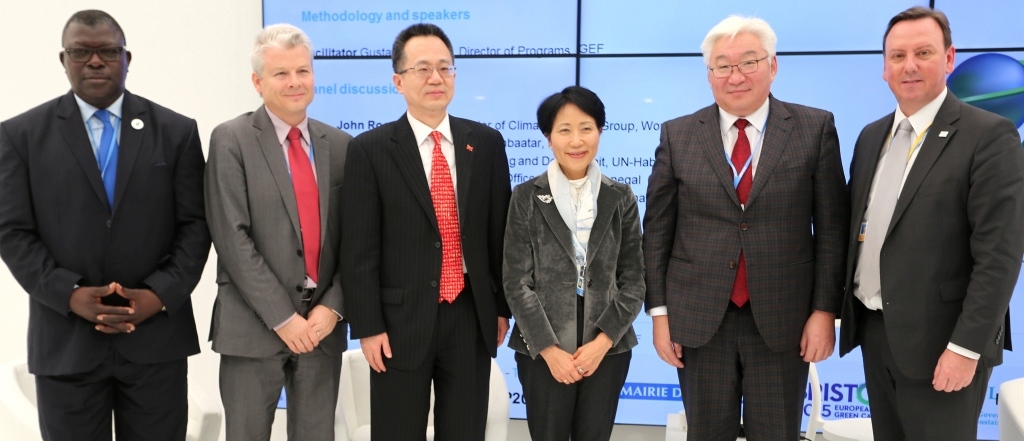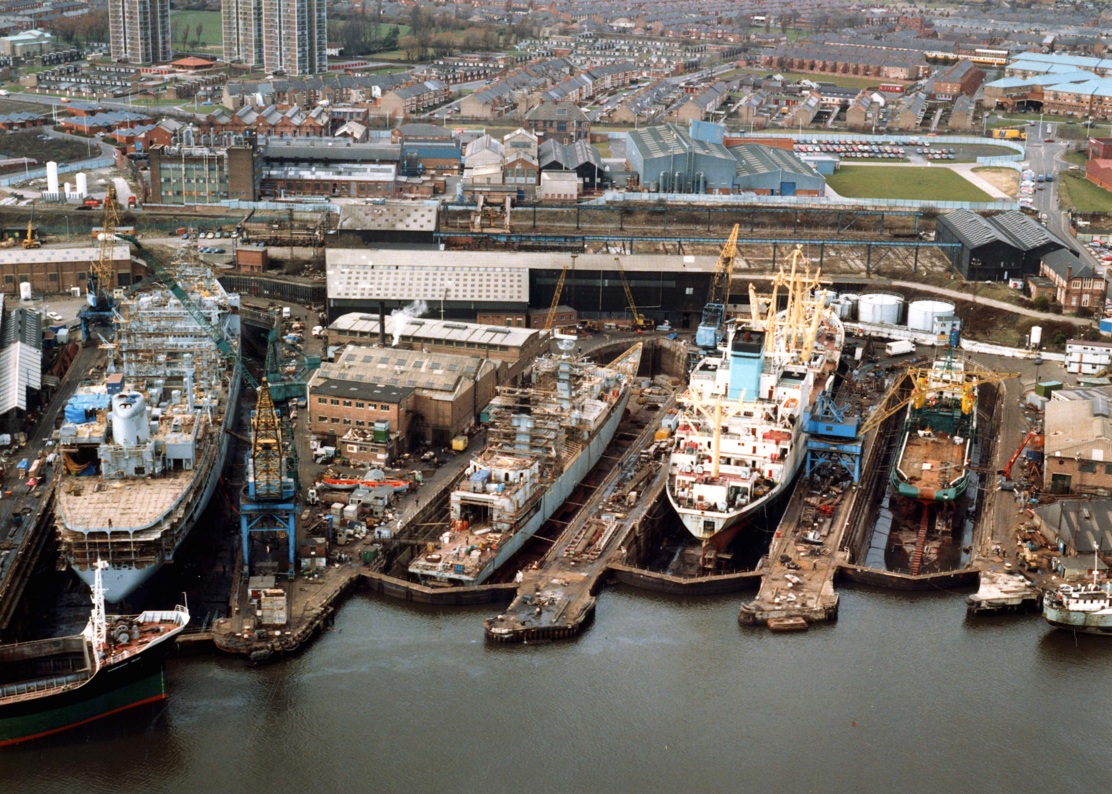The GEF: Leading on Financial Integration for Sustainable Development
As part of its Sixth Replenishment (GEF-6, 2014-1018), the Global Environment Facility (GEF) launched three Integrated Approach Pilot (IAP) programs to promote a new and innovative way of tackling the major drivers of global environmental degradation. At a session at the Cities & Regions Pavilion on 9 December, the GEF convened a panel to discuss the Sustainable Cities Integrated Approach Pilot.
This pilot seeks to promote sustainable urban development through an approach which recognizes that cities, working in collaboration with all stakeholders, are now on the front line in dealing with some of the most pressing trends and environmental challenges and that, most often, they hold the key to solutions. The program currently includes 23 cities in 11 countries. Gino Van Begin, Secretary General of ICLEI, noted that this is a new and exciting departure for the GEF, as the GEF’s work has previously focused on national governments, helping them to advance the implementation of international agreements.
As panellists in the session highlighted, this program is vital because cities need stable sustainable long-term financing mechanisms. Cities – in the global South just as in the North – cannot be built on a collection of loans or grants, funding themselves project-by-project. John Roome, Senior Director of Climate Change, World Bank explained that for a city to function investments have to happen in various sectors simultaneously in an integrated way: for instance, to relocate people living in hazardous floodplains will require not only investment in affordable housing but efficient transport to access jobs. Raf Tuts, Head of Urban Planning and Design Unit, UN-Habitat commented that integration should be more than adding sectors; it should involve deeper integration in the urban space. This means getting the basics right, with good design providing the foundation for sustainable development by avoiding sprawl, segregation and disconnection in the urban fabric.
Antoine Faye, Chief Resilience Officer, Dakar, Senegal emphasized the shared view that cities need their own core revenue streams to fund incremental resilience investments and integrated development projects. On that point, Yang Yingming, Deputy Director General, Ministry of Finance, China added that we need to redesign fiscal relations between national governments and subnational governments for the local level to get more national fiscal support as well as the ability to leverage tax revenues of their own.
Bat-Uul Erdene, Mayor of Ulaanbaatar, Mongolia illustrated how, while developing integration, it will be necessary to understand the priorities and context of the specific city. He gave the example of the “ger areas” in his city, where new arrivals live in traditional tents (“ger”) without sanitation and infrastructure and rely on burning raw coal for heating. Investment is needed here, but Ulaanbaatar is striving to ensure the use of green solutions, having piloted the use of geothermal district heating, and solar and wind resources to provide energy. Mayor Erdene is very aware of the dangers of dependency on ODA and grants for such developments, but is confident that other solutions can be found – for example, with public-private partnerships – as business investors know that green development is the way forward.
The panel also considered challenges to integration, which include the various kinds of economic, political and environmental migration. Roome explained that some elements of migration are manageable through integrated planning, as with rising sea levels, where mitigation plans can be developed. Erdene and Faye agreed that rural to urban migration cannot be stopped, particularly as people are more attracted to cities the more they improve. However, Erdene said, it is possible to impose green development standards on cities as they develop to accommodate the immigrants. Yang Yingming explained that at the national level, China is carrying out studies to assess the maximum capacity of cities, ensuring that migration can be directed appropriately.
The transition to integrated urban development and financing will not be easy, and the panel agreed that it will require leadership within all stakeholder groups, from financial institutions to cities. Roome indicated that cities would need to tell national governments and donors what they need in terms of integrated development financing, while donors would need to listen to the demands of cities rather than imposing structures.
In closing the session, GEF CEO Naoko Ishii pointed out that, when cities have integrated plans, even single grants and loans can contribute to progress on overall strategies. A lesson that she had learnt, for example from the development of the Building Energy Efficiency Accelerator, was the need to have all relevant stakeholders – city mayors and regulators, businesses and developers, and investors – in one room, with the donors bringing them together and taking the risks that the private sector can’t. Ishii also highlighted how the aggregation of small but good quality projects is an important way of accessing capital markets and attracting the major investors.
About the GEF
The GEF was established on the eve of the 1992 Rio Earth Summit to help tackle the most pressing environmental issues facing our planet. Since then, the GEF has provided US$14.5 billion in grants and mobilized US$75.4 billion in additional financing for almost 4,000 projects worldwide. The GEF has become an international partnership of 183 countries, international institutions, as well as civil society and private sector organizations, working together to address global environmental challenges.
The GEF has also invested in projects that strengthen urban resilience using a range of urban strategies, including specific zoning and building codes and flood management interventions such as the prohibition of building within known floodways.




